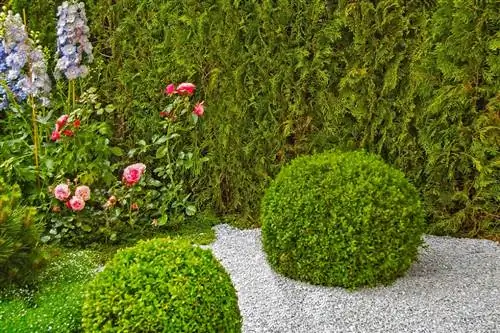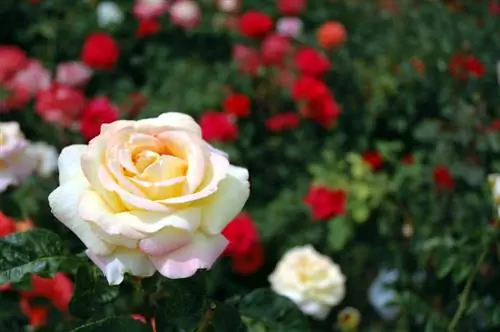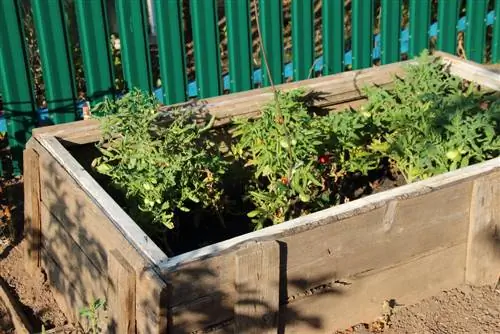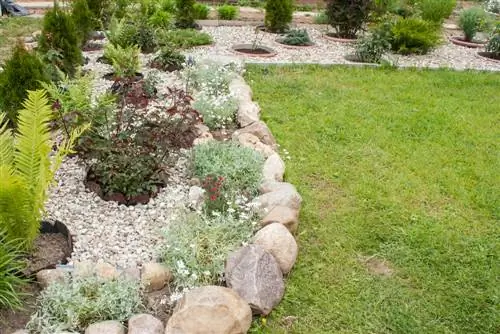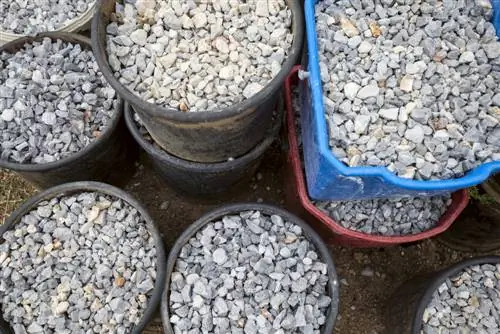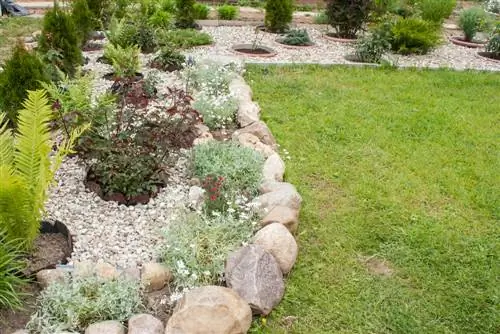- Author admin [email protected].
- Public 2023-12-16 16:46.
- Last modified 2025-01-23 11:21.
Roses have been one of the most popular garden flowers for centuries. Large-flowered specimens impress with their elegant appearance, fragrant roses exude an intoxicating aroma and in autumn the bright rose hips of many species decorate the garden and serve as valuable food for birds. Even if you want to create an easy-care gravel bed, you don't have to do without these garden beauties. They fit wonderfully into Mediterranean beds and bring the flair of southern gardens to our areas.
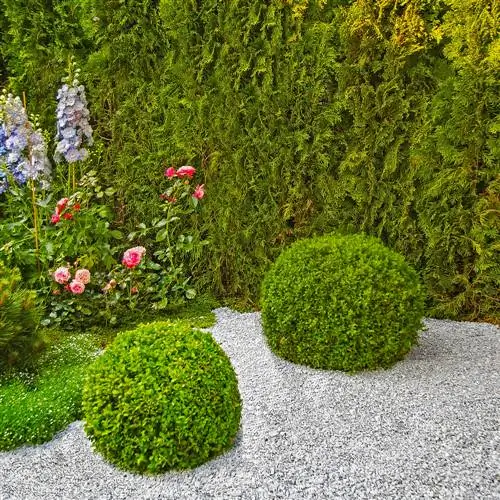
How do you care for roses in a gravel bed?
Roses in gravel beds need a sunny and airy location, topsoil mixed with sand and companion plants such as Mediterranean herbs and grasses. Pay attention to regular fertilization and correct pruning as well as resistant rose varieties for successful cultivation.
The requirements
The queen of flowers needs a sunny and airy location. That's why the gravel bed should be bathed in sunlight all day long. It also tolerates soil that is neither too dense nor too light. So topsoil mixed with sand is ideal. Here the roots get enough air and there is no need to worry about waterlogging, which roses tolerate very poorly.
In addition, the bed should be of a certain size so that both the queen of flowers as well as the frame pictures and the complementary plants are attractively displayed. With their dark foliage, roses contrast beautifully with light gravel varieties, which can make the bed particularly attractive.
Companion plants
Aromatically scented Mediterranean herbs and grasses with beautifully shaped foliage make rose petals look even more beautiful. This also applies to Mediterranean trees, whose growth habit fits wonderfully with the effect of the gravel bed planted with roses.
| Name of the plant | Features | |
|---|---|---|
| Woods | Cypress | evergreen, diverse cultivation forms, offers roses protection from the wind |
| Emeraldthuja | evergreen, tightly upright growing, lush green foliage | |
| Boxwood | is very suitable for edging and topiary | |
| Companion plants | Lavender | wonderfully smelling classic |
| Rosemary | valuable culinary herb | |
| Sage | flowers attractively light to blue-violet | |
| Thyme | aromatically scented subshrub | |
| Oregano | probably the most famous herb in Mediterranean cuisine | |
| Ornamental grasses | Blue Fescue | beautifully shaped and colored foliage with a great decorative effect |
| Switchgrass | pretty blooming rose companion for the background |
Caring for roses
Roses are considered a bit delicate. However, care is not as difficult as is often claimed, please note a few basic things:
- Locations that are exposed to the sun for around eight hours a day are optimal.
- Rose roots need space and can reach far underground. If you are planning a gravel bed in which the queen of flowers will be cultivated, dig it deep enough.
- Unlike many gravel bed plants, roses are hungry. Plants that are not adequately supplied bloom sparsely, produce only stunted new shoots and are susceptible to fungal diseases. Therefore, fertilize regularly in the gravel bed.
- Roses need to be cut. If you want a bed that doesn't require much work, these flowering plants aren't such a good choice.
Tip
Resistant rose varieties are better suited to gravel beds. They are not very susceptible to the typical rose diseases mildew, sooty mold and rust. You can recognize he althy plants by their strong green foliage. Also turn the leaves over, because pests like to hide here.

